The majority of businesses (89%) try to compete based on customer experience (Gartner).
However, in my experience, many are missing a critical aspect of successful customer engagement strategies.
Personalization is the missing key to enhancing customer engagement in your business. By tailoring experiences, content, and recommendations to individual customers, you can foster deeper connections, drive loyalty, and increase sales.
Easier said than done, though.
This is why, in this article, you’ll learn more about the importance of personalization in your customer engagement program and strategies.
Understanding Customer Engagement
Customer engagement refers to the interactions and experiences that customers have with a business throughout their journey.
From customer onboarding to helping them find out about new products or services, and loyalty programs, customer engagement involves many initiatives within a business.
It involves attracting customers, fostering their loyalty, and creating a positive brand image.
It is one of the characteristics of businesses that want to grow.
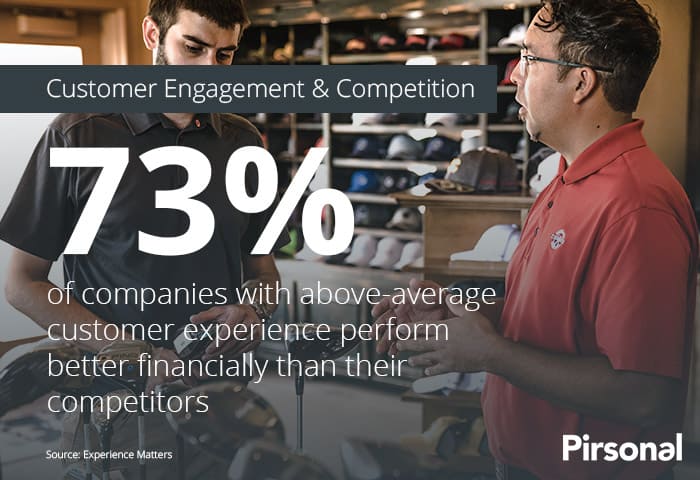
In fact, 73% of companies with above-average customer experience do better financially than their competitors.
That’s not a little thing.
However, it’s important to remember that customer engagement cannot be achieved by simply setting it and forgetting it.
It’s not just one interaction and that’s it.
Ongoing positive engagement is built on a series of interactions and experiences that continuously contribute to your customer’s “engagement bank”.
This is why customer engagement takes into account all interactions customers have with your brand.
This is regardless of the channel; digital or face-to-face.
Then, a robust customer engagement strategy helps businesses build lasting relationships, increase customer satisfaction, and drive revenue growth because every interaction matters.
Since every interaction matters, the individual context of current and potential customers is crucial.
This is what needs to be included in an engagement strategy.
As a result, personalization becomes a crucial aspect of any solid customer engagement strategy.
The Importance of Personalization in Customer Relationship
Personalization plays a pivotal role in enhancing customer engagement.
Customers today expect personalized experiences that cater to their individual preferences and needs.
When you tailor interactions and content to each customer, you make them feel valued, understood, and connected to the brand and its people.

This is one of the reasons why face-to-face conversations beat digital ones.
Think about it for a moment.
When you talk to someone face-to-face, your brain processes a lot of information.
This information creates negative and (hopefully) positive interactions that are stored in your memories, and even in your heart.
This is your unique context.
From the things you see and hear, to what you can touch, smell, and even taste.
The better the experiences and emotions associated with these conversations, the more engaged people are.
Therefore, the larger the impact and influence, the more significant the brand becomes.
In marketing, this context is associated with a lot of information.
When you are able to store, process, analyze, and use this information in your customer engagement and marketing strategies, you can successfully start personalizing customer interactions.
Benefits of Personalization in Customer Engagement
Personalization allows you to tailor your interactions and offerings to meet the specific needs and preferences of your customers. As a result, your business performs better.
Let’s explore the key advantages of incorporating personalization into your customer engagement strategy:
Enhanced Customer Satisfaction and Loyalty
By personalizing your interactions, you can provide customers with tailored experiences that resonate with their individual preferences.
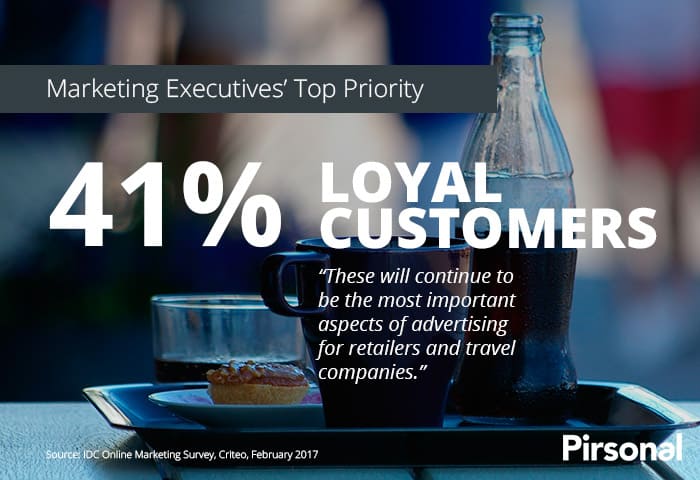
When customers feel understood and valued, their satisfaction levels increase. This, in turn, fosters a sense of loyalty and encourages repeat business.
Customer loyalty has become a top priority for marketing leaders.
Improved Customer Retention and Reduced Churn Rates
When customers receive personalized experiences, they are more likely to remain engaged with your business over time.
Personalization helps you meet their evolving needs and expectations, making it harder for them to switch to competitors.
By reducing churn rates and improving customer retention, you can maximize the lifetime value of your customers and build a strong customer base.
Increased Conversion Rates and Sales
Personalization plays a crucial role in driving conversions and sales.
By understanding your customers’ preferences, behaviors, and purchase history, you can deliver targeted offers and recommendations that align with their interests.
When customers receive relevant and timely promotions, they are more likely to convert and make a purchase.
Higher Engagement and Interaction with Marketing Campaigns
Personalization significantly enhances the effectiveness of your marketing campaigns.
When customers receive personalized messages, they are more likely to engage with your content, click through emails, and respond to your calls to action.
By tailoring your campaigns to match their interests, you capture their attention and drive meaningful interactions.
Greater Brand Advocacy and Word-of-Mouth Referrals
When customers have positive personalized experiences, they become brand advocates.
Satisfied customers are more likely to share their positive experiences with others, both online and offline, which improves brand reputation over time.
Customer Engagement and Marketing Are a Conversation
I often refer to marketing as a conversation. The same applies to customer engagement based on personalization.
The best conversations take into account each participant’s context.
In fact, solid relationships are full of context.
The same should apply to your customer engagement strategy if you want it to be sustainable and to support your overall business goals.
Then, for your customer engagement strategy to be successful, you must constantly start from the customer’s context and anticipate their goals, needs, and objections.
Here is a silly example.
The other day I anticipated that my wife was going to have a challenging day ahead.
She often wakes up first to read at the kitchen table.
So I wrote a little encouragement note for her and added a rose and a candle to the combo.
Side note: A neighbor gave us the rose and the candle was a gift from my sister-in-law.
Because I know her well, I was certain about the positive impact this would have on her.
It made her feel important and better about the day.
It is part of a lasting conversation that has been on for years now, full of context.
This conversation has amazing interactions in our memories, but it comes with hard moments and tears in the “engagement bank”.
But, when you look at the general picture, engagement is up because we love each other and are fully committed to our relationship.
Now, think about your customers.
Maybe they are brand ambassadors, but they don’t love your brand in the more biblical sense.
They are not fully committed no matter the circumstances.
They won’t forgive all the mistakes in the delivery of your products and services.
They are not fully invested in the relationship.
That’s an effort that must come from your business in order to invest in the relationships with customers.
Personalization creates a sense of relevance and enhances the overall conversation and customer experience.
As a result, using personalization in your customer engagement strategy leads to increased loyalty and advocacy.
Challenges of Personalization in Customer Engagement
Implementing effective personalization in customer engagement strategies can be challenging for most businesses, especially through digital channels.
Here are some challenges you need to be aware of:
Data Collection
Personalization begins with data. However, gathering accurate and relevant customer data can be a complex task, requiring the use of appropriate tools and technologies.
In face-to-face interactions, this is “easy” because we simply use our brains and memories.
But in digital marketing, you need processes, systems, and tools in place to successfully collect customer data.
It’s crucial, then, to collect and analyze relevant customer data.
This is one of the reasons why customer relationship management software (CRM), customer data platforms (CDPs), and marketing automation tools have become more popular among businesses of any size.
It’s the foundation of a customer-centric approach.
Collecting customer data will help you gain insights into their preferences, behaviors, and needs.
Without a solid data-driven approach, personalization efforts will fall short: Either average or below average.
And this is something your competitors are already doing.
To address this gap, invest in data collection methods that adapt to your business processes and goals.
Common and handy ways are:
- Website analytics
- Customer surveys
- Email marketing analytics
- CRM analytics
- Social media listening tools
- Video marketing engagement metrics
Then, analyze this data to identify patterns and trends that can inform your personalization strategy.
Use CRM software to centralize and manage customer data effectively.
Ensure that customer data is accessible in all customer-facing tools used by various departments, such as Customer Support, Sales, and Marketing.
Data Analysis
If many businesses struggle to gather comprehensive data, even more fail to utilize the data they already have effectively.
Interpreting and deriving meaningful insights from customer data requires advanced analytics capabilities and expertise.
However, most businesses don’t have in-house expertise for a detailed analysis.
To overcome this, simply look at this information from a creative perspective and find patterns you can use across customer touchpoints.
To effectively do this, ask yourself these questions:
- What information will help us create relevant content and messages that better relate to our customers so that they take action?
- What information will help us deliver a personalized customer experience so that our product or service is sticky?
- What information will help us increase sales and improve customer retention by anticipating customer needs in the purchase journeys?
This data analysis will take you to segmentation.
There is no better way to create and distribute personalized messages than by segmenting your audiences.
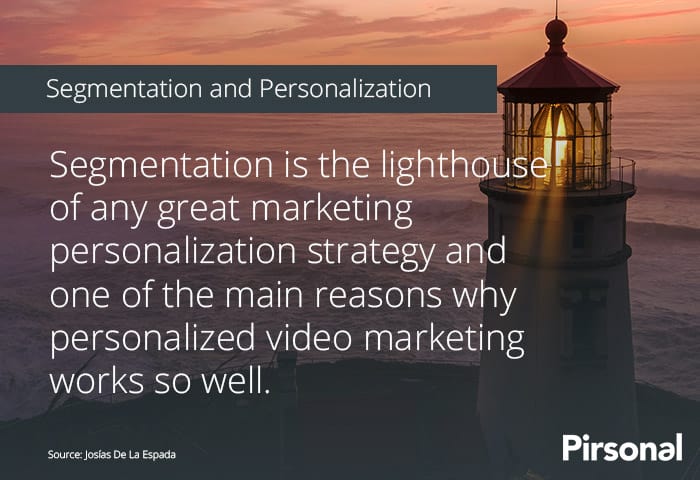
Resource Constraints
During the past twenty years, I have come to understand that the implementation of comprehensive personalization strategies can be hindered more by experience and resources rather than by budget constraints.
This is one of the reasons at Pirsonal we have a hands-on approach.
We understand that most marketing and customer management teams don’t have experience with personalized video marketing.
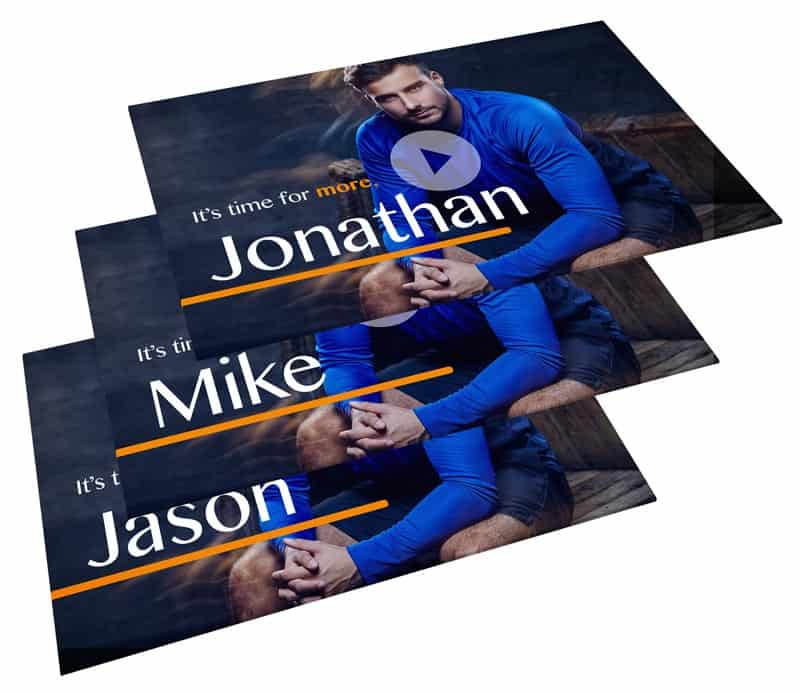
Thus, we walk with them to help them launch their video personalization program based on our flexible tools.
Why is this critical?
Businesses with a personalization mindset perform about 20% better financially than businesses that don’t have it.
In order to improve your customer engagement strategy, your teams need to acquire a data-driven approach.
An achievable step to make this happen is collaborating with other teams, especially those with a creative mindset, and tackling this as a joint effort.
You’ll notice that then you will all be on the same page, working in the same direction.
As a result, you’ll find many practical customer interactions that can be personalized.
Privacy Concerns
Balancing personalization with privacy regulations and customer consent is essential to maintain trust and compliance.
To tackle this challenge, focus on collecting first-party and zero-party data and communicate why you are collecting this information.
First-party data is the data you directly collect from customers, for instance through a web form.
Zero-party data is the information that a customer intentionally and proactively shares with your business.
Also, use personalization software with processes and systems in place to protect your organization’s and customers’ data.
For example, at Pirsonal, we frequently receive inquiries about the security measures we implement to safeguard the data handled by our personalized video platform.
As an ISO 27001-certified video personalization software, we understand the importance of privacy concerns.
Strategies for Implementing Personalization
Successful customer engagement strategies have three characteristics in common.
They are all based on specific goals, use the customer’s context to drive the interactions, and leverage dynamic or personalized content to boost engagement.
Then, to overcome the challenges I mentioned earlier and unlock the benefits of personalization in your customer engagement strategy, businesses can employ the following strategies:
Setting Clear Customer Engagement Goals
Setting clear goals allows businesses to define what they aim to achieve through each customer interaction.
Whether it is increasing brand loyalty, improving customer satisfaction, or driving sales, having specific goals helps businesses stay focused and measure their success.
To make this easier and more useful, use the SMART methodology.
Basically, set goals that are Specific, Measurable, Achievable, Relevant, and Time-bound.
Each customer engagement goal should be well-defined, quantifiable, attainable, aligned with the overall business objectives, and have a specific timeframe for achievement.
Collecting and Analyzing Customer Data
As mentioned, invest in data collection methods to capture relevant customer information across various touchpoints.
Leverage CRM systems, website analytics, social media listening tools, video engagement, and surveys to gather valuable insights.
Analyze this data to understand customer preferences, behavior patterns, and demographics.
Collaborate with other teams, especially those with a creative mindset.
Use this data through the lens of personas. This is a priority that is increasing across organizations (24%).
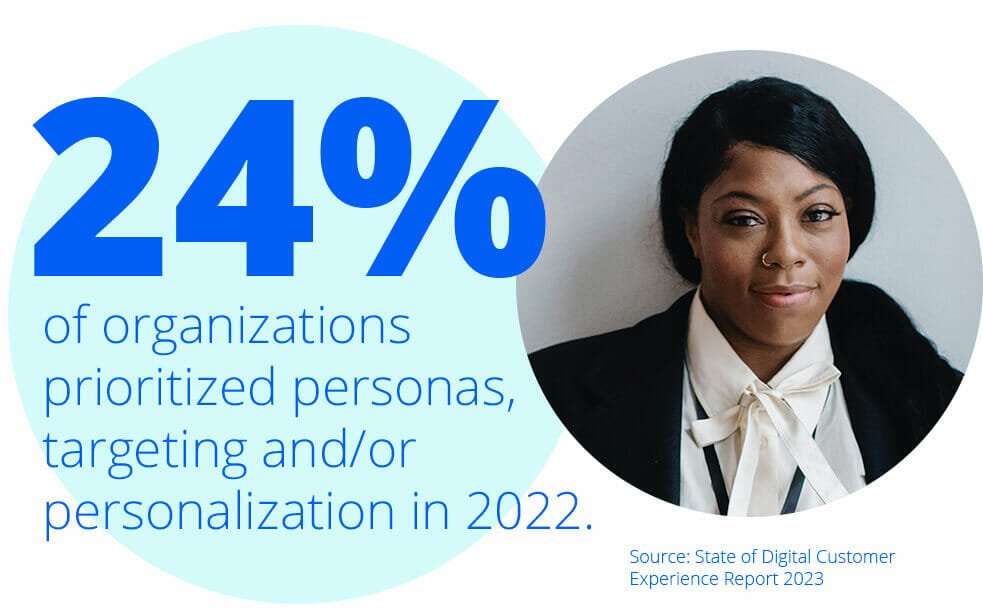
Utilizing AI and Machine Learning
Leverage artificial intelligence (AI) tools like ChatGPT and machine learning algorithms to automate data analysis and identify patterns and trends.
These technologies can help in segmenting customers, predicting their preferences, and delivering personalized experiences at scale.
Creating Dynamic and Personalized Content
Develop dynamic content that adapts to each customer’s preferences and interests.
Make sure to choose the type of content that makes it easier for customers to consume and interact with your products and services.
For instance, video is universally preferred by all types of audiences.
Then, use personalized videos to increase engagement across the customer journey.
Take a look at the following personalized customer engagement workflows in a hotel marketing strategy:
As you can see, using personalized videos to engage with guests when they book a reservation is a great example of innovation in customer engagement strategy.
The hotel actively interacts with new guests in order to increase the number of upsells.
They do this by automatically creating a personalized video for every customer.
Watch the following video to learn how to creatively use personalized videos as part of a marketing automation workflow to boost customer engagement.
These types of videos are even more effective if you add personalized calls-to-action buttons (CTA) to them.
You can easily do this at scale with Pirsonal’s interactive video player, Pirsonal Player.
Implementing Personalized Recommendations
Leverage recommendation engines to provide customers with personalized product suggestions based on their past purchases, browsing history, and demographic information.
This can enhance cross-selling and upselling opportunities, leading to increased sales and customer satisfaction.
Also, since you are storing customer data in your CRM or marketing automation platform, you can send personalized emails, SMS,or even WhatsApp messages to customers based on real-time interactions.
Leveraging Multi-Channel Communication
Engage customers across multiple channels such as email, direct mail, social media, mobile apps, personalized videos, and live chat.
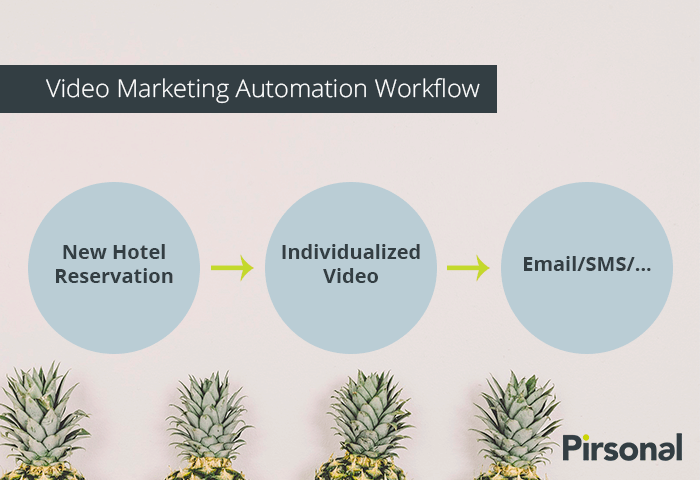
For instance, you can leverage offline channels like direct mail marketing powered by personalized messages.
Take the following image as an example. It shows a personalized direct mail piece that at the same time leads the target audience to a personalized landing page with a dynamic video.
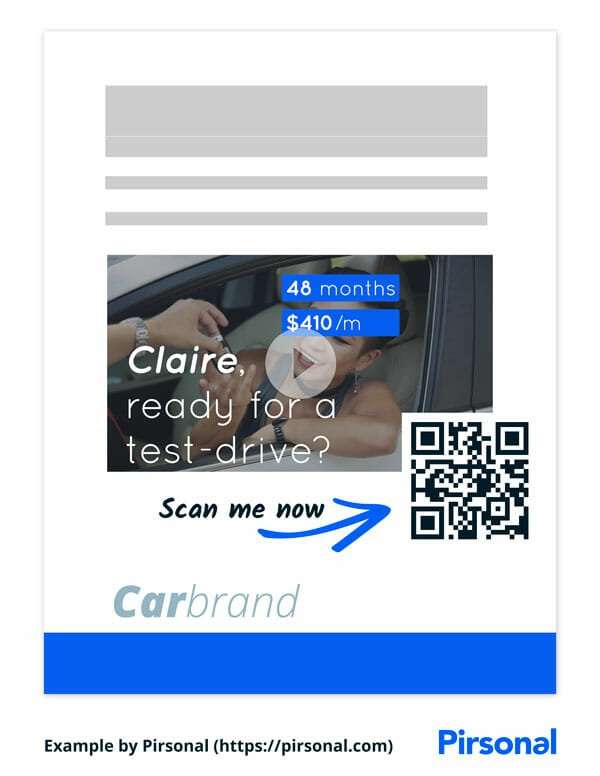
Ensure consistency and personalization in communication across these channels.
Integrate customer data and preferences across platforms to provide a seamless and personalized omnichannel experience.
Connecting with Customers through their Emotional Motivators
Research has proven that emotions drive your customer’s decision-making process. This happens thanks to what the experts call emotional motivators.
Emotional motivators are deep-rooted desires and feelings that drive human behavior and decision-making processes.
In our experience, taking into account the emotional context of your target audience makes your personalization strategies and messages more relevant and effective.
For instance, there are over 300 emotional motivators that facilitate these customer connections through video personalization. However, there are ten that you’ll find over and over across the interactions between brands and customers.
The following infographic shows these ten emotional motivators:
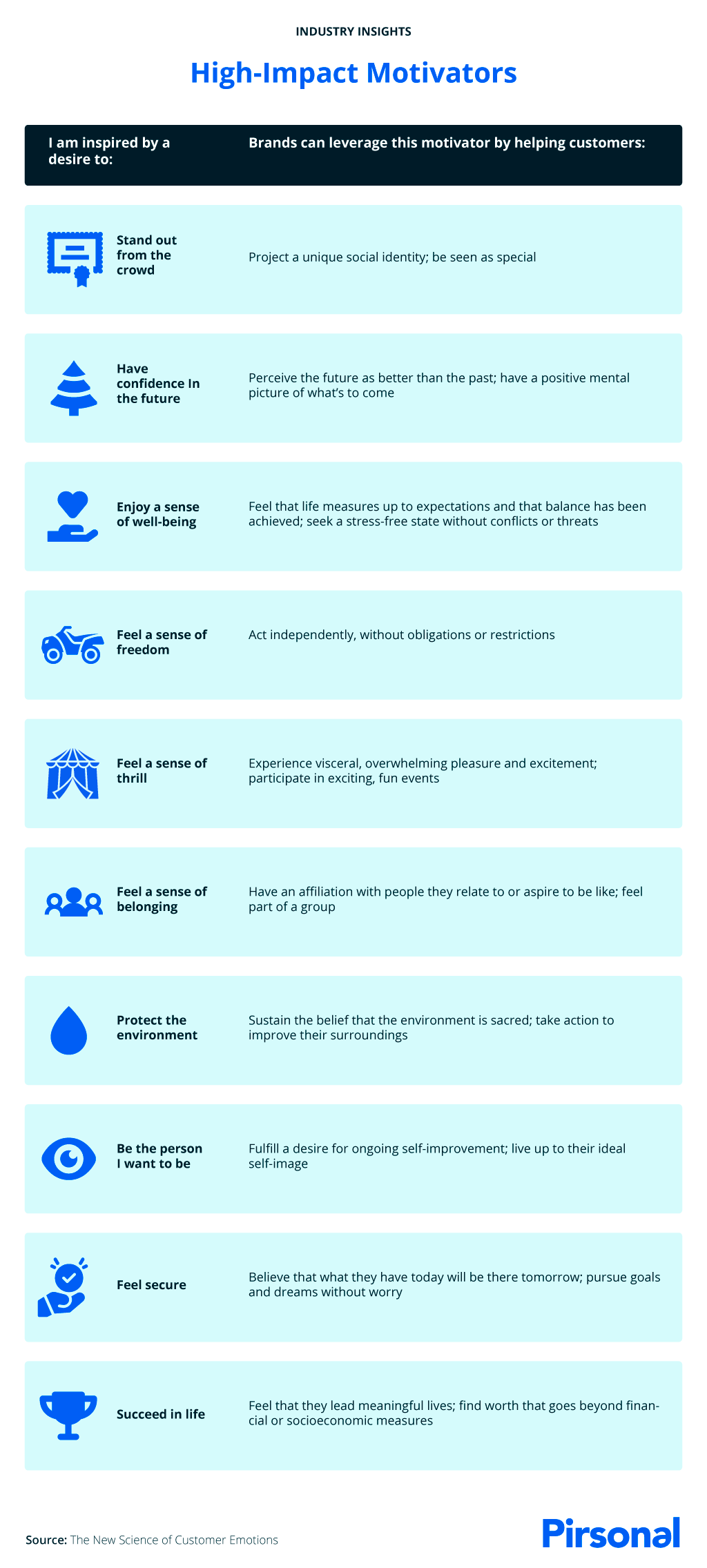
Infographic showing high-impact emotional motivators in customer engagement and personalization
Therefore. brands achieve an emotional connection when they align with customers’ motivations, tapping into deep, often unconscious desires.
These unconscious desires help them pay more attention to your messages and interactions and make it easier for them to take action.
Examples of Successful Personalization Strategies
Several companies have achieved customer engagement success through effective personalization strategies. For instance:
- Amazon utilizes personalized product recommendations based on user behavior and purchase history.
- Netflix offers personalized movie and TV show suggestions based on viewing habits and ratings.
- Spotify curates personalized playlists based on individual music preferences and listening habits.
- BMW Financial Services uses personalized videos in post-sales engagement to help new customers understand their contracts and benefits and to reduce complaints.
These examples demonstrate how personalization can drive customer engagement and generate positive business outcomes.
Conclusion
Personalization is the missing piece in many customer engagement strategies.
By tailoring experiences, content, and recommendations to individual customers, businesses can foster deeper connections, enhance customer satisfaction, and drive business growth.
Embrace personalization as a core element of your customer engagement strategy to stay ahead in today’s competitive market.
To know more about how to successfully incorporate personalized videos into your customer engagement strategy, contact us today.
As mentioned, most businesses struggle to use personalization in customer engagement because of the lack of experience and resources.
At Pirsonal, we assist our clients by offering a highly flexible personalized video platform that caters specifically to their requirements, audiences, and workflow.
In addition, we provide hands-on guidance to ensure their success in accomplishing their objectives.
FAQs About Personalized Customer Engagement
How can I collect customer data for personalization?
You can collect customer data through various channels such as website analytics, interactive video players, surveys, social media listening, and customer feedback forms.
Is personalization only relevant for e-commerce businesses?
No, personalization is valuable for businesses across industries. For instance, businesses in hospitality, real estate, financial services, and more have successfully implemented personalized video strategies with Pirsonal.
What tools can I use for implementing personalization?
There are many tools available, such as Salesforce for CRM, Pirsonal for personalized videos, ActiveCampaign for marketing automation, and Amplitude for product intelligence.
How can personalization improve conversion rates?
Personalization improves conversion rates by delivering relevant content, offers, and recommendations that resonate with individual customers’ needs and preferences.
What are the privacy considerations when implementing personalization?
Privacy is crucial when implementing personalization. Ensure compliance with privacy regulations, obtain customer consent, and handle data securely. We recommend working with ISO 27001-certified software vendors.

